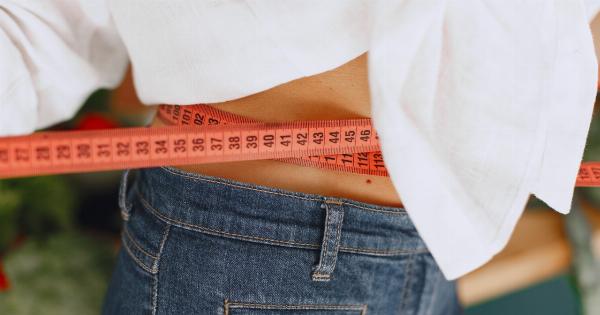Anemia is a condition characterized by a decrease in the number of red blood cells or a low level of hemoglobin in the blood. It is a common condition that affects people of all ages and genders.
However, women are more prone to developing anemia compared to men. In this article, we will explore the various causes, symptoms, and methods of diagnosing anemia in women.
Causes of Anemia in Women
There are several factors that contribute to women being more susceptible to anemia:.
1. Iron-deficiency
Iron-deficiency anemia is the most common type of anemia in women. It occurs when the body lacks sufficient iron to produce an adequate amount of hemoglobin.
Women are at a higher risk of developing iron-deficiency anemia due to monthly blood loss through menstruation. Heavy or prolonged menstrual periods can lead to a significant loss of iron over time.
2. Pregnancy
Pregnant women have an increased demand for iron to support the growth and development of the fetus. The body needs iron to produce more blood to supply oxygen to both the mother and the baby.
If the iron intake is insufficient during pregnancy, it can lead to anemia.
3. Vitamin Deficiencies
Deficiencies in essential vitamins like vitamin B12, folate, and vitamin C can also contribute to anemia in women. These vitamins are crucial for the body’s ability to absorb and utilize iron.
A diet lacking in these vitamins can hinder iron absorption and result in anemia.
4. Chronic Diseases
Some chronic diseases, such as kidney disease or autoimmune disorders, can contribute to anemia in women.
These diseases can affect the production and lifespan of red blood cells or interfere with the absorption and utilization of nutrients necessary for healthy blood cell production.
Symptoms of Anemia in Women
There are several common symptoms associated with anemia in women:.
1. Fatigue
Feeling tired and having low energy levels is a prominent symptom of anemia. The body’s cells and tissues receive less oxygen due to the reduced number of healthy red blood cells, leading to fatigue and weakness.
2. Pale Skin
Anemia affects the color of the skin, making it appear paler than usual. The reduced amount of hemoglobin in the blood results in a decrease in redness, giving the skin a pale or washed-out appearance.
3. Shortness of Breath
Due to a low oxygen-carrying capacity, anemic women may experience shortness of breath even with minimal physical exertion. This occurs as the body struggles to meet the oxygen demands of vital organs and tissues.
4. Dizziness and Headaches
Anemia can cause dizziness, lightheadedness, and headaches due to poor oxygen supply to the brain.
5. Irregular Heartbeat
In severe cases of anemia, the heart may need to work harder to compensate for the decreased oxygen levels. This can lead to an irregular heartbeat or palpitations.
Diagnosis of Anemia in Women
If anemia is suspected, a healthcare professional may perform the following diagnostic tests:.
1. Complete Blood Count (CBC)
A CBC provides essential information about the number of red blood cells, hemoglobin levels, and other blood components. It helps determine the presence and severity of anemia.
2. Iron Studies
Iron studies measure the levels of iron, ferritin (a protein that stores iron), transferrin (a protein that transports iron), and total iron-binding capacity in the blood.
These tests give insight into the body’s iron stores and provide evidence of iron deficiency.
3. Vitamin and Inflammation Markers
Tests may be conducted to measure the levels of vitamins like B12 and folate, as well as inflammation markers, which can indicate whether anemia is caused by a deficiency or an underlying chronic disease.
4. Bone Marrow Examination
In certain cases, a bone marrow examination may be recommended to determine the underlying cause of anemia if other test results are inconclusive. A small sample of the bone marrow is obtained and examined under a microscope.
Treatment and Prevention
The treatment of anemia in women depends on the underlying cause. Some common approaches include:.
1. Iron Supplementation
For iron-deficiency anemia, healthcare providers may recommend iron supplements to replenish iron stores and improve hemoglobin levels. Iron supplements should be taken as prescribed, and dietary changes to include iron-rich foods are also recommended.
2. Vitamin and Nutritional Supplements
If the anemia is caused by vitamin deficiencies, supplementation or dietary changes to include more vitamin-rich foods are often recommended.
3. Treating Underlying Conditions
If chronic diseases are contributing to anemia, treating and managing those conditions can help improve anemia symptoms. This may involve medications, lifestyle changes, or other treatments as prescribed by a healthcare professional.
Prevention of Anemia in Women
Preventing anemia in women involves adopting certain lifestyle measures:.
1. Balanced Diet
Consuming a balanced diet that includes foods rich in iron, vitamins, and nutrients is crucial in preventing anemia. Incorporate leafy greens, lean meats, fish, poultry, and legumes into your meals.
2. Iron and Vitamin C Combination
Pairing iron-rich foods with those high in vitamin C can help with iron absorption. Vitamin C-rich foods, such as citrus fruits, berries, and tomatoes, can enhance the body’s ability to absorb iron from plant-based sources.
3. Menstrual Hygiene
Proper menstrual hygiene practices, including changing tampons or pads frequently, using iron-rich menstrual products, and seeking medical advice for heavy or prolonged periods, can help prevent iron loss and anemia.
4. Prenatal Care
During pregnancy, regular prenatal care and following healthcare provider recommendations regarding iron and vitamin supplements are essential to prevent anemia.
Conclusion
Women are more prone to anemia due to various factors, including iron-deficiency, pregnancy, vitamin deficiencies, and chronic diseases.
Recognizing the symptoms of anemia, seeking timely diagnosis, and following appropriate treatment methods can help alleviate symptoms and prevent further complications. By adopting a balanced diet and practicing good menstrual hygiene, women can reduce their risk of developing anemia and maintain optimal health.































